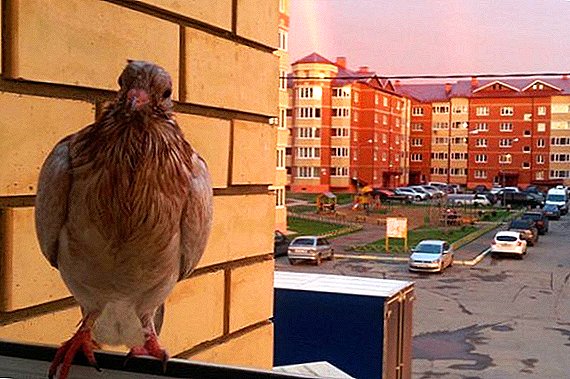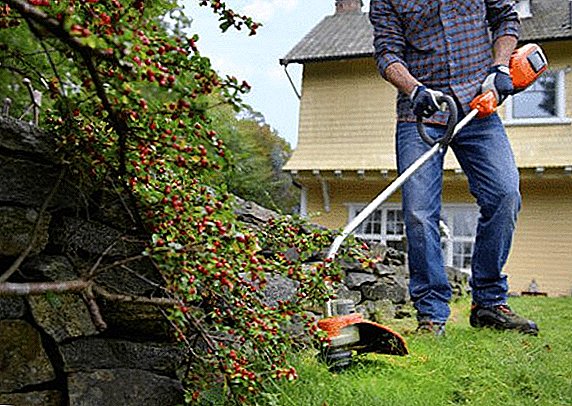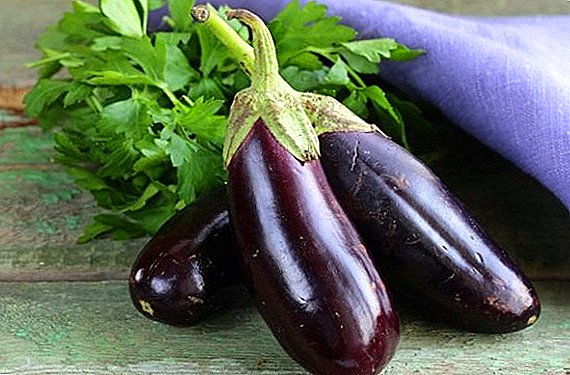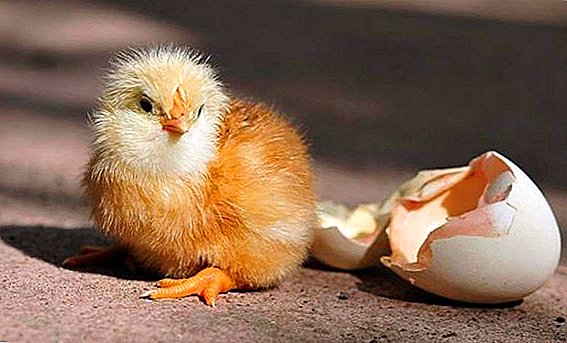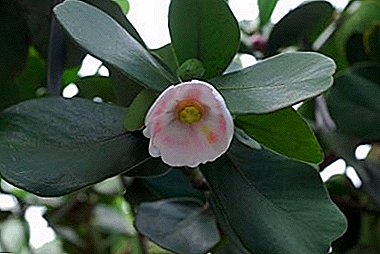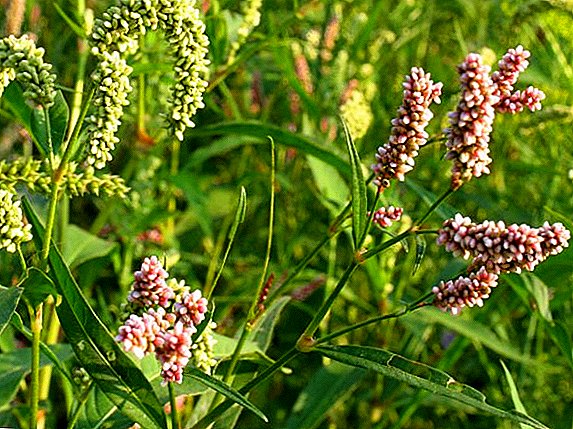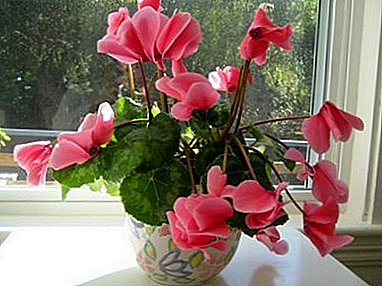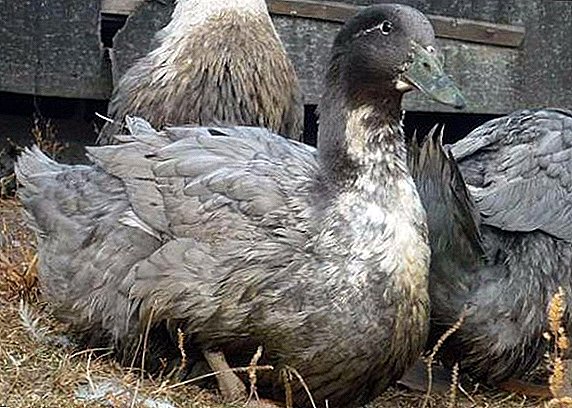 Today we offer to pay attention to the blue favorite that is common among farmers in the breed of domestic ducks: get acquainted with the distinctive features of a duck, a description of its merits and various photos.
Today we offer to pay attention to the blue favorite that is common among farmers in the breed of domestic ducks: get acquainted with the distinctive features of a duck, a description of its merits and various photos.
The Blue Favorite is a breed of ducks that has recently entered the market and has gained special popularity among farmers. The breed is excellent for breeding in both large farms and home plots. Many breeds are grown for meat consumption at home or for mass distribution.
Breed description
To begin, consider the characteristics of duck productivity favorite, as well as a description of the external qualities of the breed.

External characteristics
The blue favorite is a squat and rather large bird. The duck has a strong body structure. The body is long, the back is wide, the chest is moderately convex. The neck of an adult drake has an average length, the head is relatively large, the eyes are small. Beak elongated and flat. Legs strong and massive, of medium length. The limbs are set extremely wide; paws are webbed. Wings tightly adjacent to the body.
The shade of feathers is often smoky blue, but can range from blue to ashen with overflow. The feet and beak are also bluish.
Read also about the features of breeding duck mandarin ducks, musk ducks, ostriches, geese, quails, pigeons, peacocks.
Productivity
Numerous unanimous reviews of breeders prove that blue favorite ducks are excellent for breeding and keeping at home.

The blue favorite is an early maturing poultry. Feathered very quickly and, most importantly, easy to feed. At the age of 5-6 months, individuals already reach the size of a goose of similar age. An adult male can gain weight up to 5 kg, and a female - 4 kg.
Duck egg production is good and is about 100-150 eggs per year. Egg size is medium; the weight of one egg is 80-90 g.
The minus of the breed is the complete absence of self-preservation instinct. Ducks are bad hens. However, the problem is easily solved by an incubator or other hens, for example, chicken or turkey.
Conditions of detention
Favorite has excellent survival rate. Strong immunity helps birds quickly adapt to changing climatic conditions. Birds can easily withstand temperatures from -25 to +35 ° C. Therefore, for their breeding are suitable both hot and cold areas. As a place to keep fit a regular pen, barn or other room.
The standard dimensions of the house are: width up to 40 cm, height 30-40 cm. To block the house from rodents, the floors must rise at least 25 cm above the ground. If the room is made of wood, the walls must be plastered. Due to duck endurance and unpretentiousness, warming of the room is not required. However, special attention should be paid to the sexes. Equip a henhouse with straw, peat, shavings or sedge. The thickness of the litter should be about 30 cm.
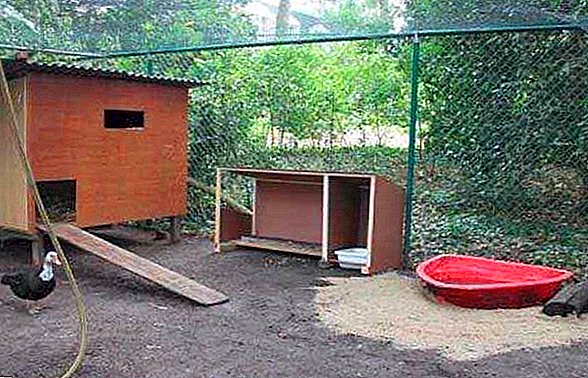
For greater comfort of the birds in advance, take care of good ventilation, and also make sure that the house is dry and comfortable enough. Observe the correct light mode - moderate lighting for at least 14 hours a day. In winter, use artificial light sources.
It is also important to have a territory for walking pets, where they can walk in the daytime. In summer, an open-air cage is settled on the plot. For the fence fit different materials: slats, metal mesh and others. The fence is built with a height of 1 meter. In hot weather, cover the fence sheds.
Keeping poultry in the winter season also requires regular walking. The future place for walking is cleared of snow and thickly covered with straw. In windy weather and severe frosts it is unacceptable to force ducks to walk for a long time. To protect against the wind from the outside of the house construct a vestibule. Feeders and drinkers should stand in the pen. In the house regularly need to carry out cleaning and ventilation.
Did you know? The blue favorite in the common people is called "Pharaoh". The first part of the name of the breed acquired thanks to the original grayish-sky color of plumage. And the “favorite” or “pharaoh” (in common) duck is called due to the many positive qualities that it possesses.
Adult Duck Feeding Diet
Blue ducks are not picky about the diet. but full and high-quality food affects the productivity of the breed. So let's see how to feed ducks of the blue favorite.

For adult birds, wet feed mixes are excellent. Fodder usually includes milk, cottage cheese, herbs, cereals and root vegetables.
In winter, birds feed three times a day. In the morning and daytime feeding give a moist crumbly mixture, in the evening you can feed the feed. Add another feeding to the beginning of the breeding season. The fourth feeding is administered in the middle of the day, it can be a cereal mixture or wheat germ. In addition, in winter poultry can be given bran (from 25 g), high-quality hay flour (up to 50 g per head) or succulent feed (up to 150 g).
Important! The basic condition of the content of birds - access to a small natural reservoir. This has a beneficial effect on the health and appearance of the ducks. It is thanks to the reservoir that a certain part of the food of the duck is extracted independently.
If the birds use free-range, then in the summer they are fed twice a day: in the morning - with a wet flour mixture, in the evening - with the usual cereal mixture. In the evening, the grain mixture to birds is better to give enough. It is also desirable that in the summer time on the site of walking favorites there was a lot of fresh grass.
Breeding and rearing
The young blue favorite has a high viability. Like many types of poultry, favorite chickens are grown artificially or bred by natural incubation.
Content of chicks
Before placing the young in the room where it will be kept, it is necessary to produce there. full cleaning. The walls of the room and all the equipment should be thoroughly disinfected, remove debris and dangerous small items, and carry out wet cleaning.
Align the place for walking of chicks and cover it with river sand 4-6 cm thick. If the house has been properly equipped, the ducklings will behave lively and vigorously. In too hot a room, chicks will breathe heavily. And in the bitter cold, the young ones will begin to squirm and quack loudly, trying to warm up.
Important! Before settling small favorites, each chick must be fed with a solution of one percent potassium permanganate (using a pipette).

Rules of feeding and care
The intense nutrition of the blue favorite is especially important for keeping the duck in the first months of growing. This contributes to the maximum weight gain in chicks. With proper and balanced fattening by two months, the birds gain a weight of 2.7-3.6 kg. In the future, the diet of birds becomes more orderly.
The diet of young animals initially should consist only of protein foods. In the first week, small favorites are fed with chopped duck, goose or chicken eggs. As they grow, greens of nettle or other herbs are introduced, as well as carrots and potatoes. After a month, milk and cereal mixtures are gradually introduced into the diet of ducklings.
A balanced diet provides well-being not only to ducks, but also to goslings, broiler chickens, quails, peacocks.
Often, ground shells or chalk are often used as special feed additives. Try not to place the drinker near the feeders, because after eating the ducklings will immediately begin to drink and some of the food will be washed out.
As for the care of the house, they should be kept in warm and comfortable conditions (the temperature should be maintained within + 22-29 ° С). Ducklings should not live on bare ground, so arrange a litter for them - lay hay or straw.
It is also necessary to ensure good lighting for at least 16 hours a day. To do this, in places where chicks are kept it is necessary to install a fluorescent or LED phytolamp.
Did you know? Blue breed is included in the experimental group. The duck was created by the method of long crossing of different breeds and was bred in 1998 at the poultry farm of Bashkortostan. The breed was not the ultimate goal of breeders, but the preliminary result exceeded all forecasts. The favorite duck is the cross of the Bashkir, Beijing and Black white-breasted breed. From all three types of factory cross favorite took only the best, as a result of which this duck has practically no flaws.
As you can see, the duck of the blue breed is unpretentious to the conditions of detention and feeding. In addition, this bird has a calm disposition and beautiful appearance.


